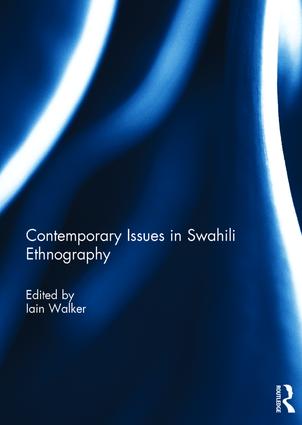In November 2016 our long-awaited chapter on 'Cryptids and credulity' appeared in Samantha Hurn's edited volume
Anthropology and Cryptozoology: Exploring Encounters with Mysterious Creatures. As publishers often do these days, the book was forward dated to 2017, confusing us all.
Here's an extract from the introduction to our chapter:
Cryptids and credulity: the Zanzibar leopard and other imaginary beings
Martin T. Walsh and Helle V. Goldman
There is nothing intrinsically unscientific about searching for new (undescribed) and old (extinct) species, and one cryptozoologist has defined the discipline concisely as ‘a targeted-search methodology for zoological discovery’, noting that it is only one of a number of possible means to achieving this end (Arment 2004: 9). But all too often cryptozoologists’ desire to find hidden species and identify the imaginary as real leads them to downplay the negative evidence that carries more weight with conventional zoologists and ethnozoologists (Simpson 1984: 12–14; Meurger 1988: 11–24). Although there is also a strong tradition of debunking fakes and false claims within cryptozoology, it has failed to establish itself as an academic discipline (Coleman 2002: xxxiii), while the professional association founded by Heuvelmans and colleagues – the International Society of Cryptozoology – has long since been defunct and its journal (
Cryptozoology) extinct (Eberhart 2002: xxvii).
Our epigraph highlights a boundary problem that cryptozoologists have also struggled with: what kinds of phenomena or imaginary being fall within their remit? The subjects of cryptozoology are generally now referred to as cryptids, on one definition ‘the alleged animals that cryptozoologists study’ (Eberhart 2002: xxiii, also xlvii). Some restrict this to non-microscopic creatures they consider most likely to be discovered to be living species; others include historical and contemporary entities that are more obviously mythical (compare Greenwell 1985; Arment 2004: 11–12, 16–18). In his encyclopaedia Eberhart takes the broader view, and lists ten categories that most of the ‘mystery animals’ in his compilation fall into:

1.
Distribution anomalies ...
2.
Undescribed, unusual, or outsize variations of known species ...
3.
Survivals of recently extinct species ...
4.
Survivals of species known only from the fossil record into modern times ...
5.
Survivals of species known only from the fossil record into historical times ...
6.
Animals not known from the fossil record but related to known species ...
7.
Animals not known from the fossil record or bearing a clear relationship to known species ...
8.
Mythical animals with a zoological basis ...
9.
Seemingly paranormal or supernatural entities with some animal-like characteristics ...
10.
Known hoaxes or probable misidentifications ... (2002: xxiii–xxiv)
The subject of our paper is the analysis of narratives and statements about an animal, the Zanzibar leopard (
Panthera pardus adersi), which might be included in Eberhart’s third category, given that it has been declared by some authorities to be extinct, though many Zanzibaris remain convinced of its continued existence. The classic example of a carnivore in this category is the Thylacine or Tasmanian tiger (
Thylacinus cynocephalus), and in a later section we will explore some of the differences and significant parallels between the two cases. Unlike its marsupial analogue, the demise of the Zanzibar leopard has been so recent that zoologists cannot be sure that no individuals survive. In this respect its cryptozoological (and ontological) status remains uncertain.
However, as an anthropological analysis of indigenous and other narratives about the leopard shows, it can be described under more than one of Eberhart’s headings: as the undescribed (and unusual) variation of a known species, as a mythical animal with a zoological basis, and perhaps even as a supernatural entity with animal-like characteristics. Whereas popular cryptozoology typically reduces the investigation of imaginary beings to a single dimension (‘do they exist or not?’), we argue that only careful anthropological and ethnozoological research can unravel the complexity of cases like that of the Zanzibar leopard and other so-called cryptids. And, as this introduction has implied, cryptozoology itself can also be analysed anthropologically, a subject we will return to briefly in our conclusion.
A version of the chapter can be viewed online here:
https://www.academia.edu/31272848/Cryptids_and_credulity_the_Zanzibar_leopard_and_other_imaginary_beings


 Towards the end of our work in Jozani-Chwaka Bay National Park, we also engaged in an imaginary leopard chase of the kind that we've described in earlier publications (see the references below). As we might have expected, this came to nought, and we left with nothing to pique the interest of the producers and film crew. They did, however, use footage of an interview with us and many clips of the other animals that we had camera-trapped, including superb daytime (and therefore colour) video shots of a servaline genet.
Towards the end of our work in Jozani-Chwaka Bay National Park, we also engaged in an imaginary leopard chase of the kind that we've described in earlier publications (see the references below). As we might have expected, this came to nought, and we left with nothing to pique the interest of the producers and film crew. They did, however, use footage of an interview with us and many clips of the other animals that we had camera-trapped, including superb daytime (and therefore colour) video shots of a servaline genet.  In the absence of verified evidence, like most authorities we now presume the Zanzibar leopard to have been extirpated, despite tantalising reports and claims to the contrary. But this shouldn't stop people from enjoying Animal Planet's expertly crafted and highly entertaining narrative.
In the absence of verified evidence, like most authorities we now presume the Zanzibar leopard to have been extirpated, despite tantalising reports and claims to the contrary. But this shouldn't stop people from enjoying Animal Planet's expertly crafted and highly entertaining narrative.







